On Sunday, October 1st, the Chicago Sukkah Design Festival celebrated the launch of its second annual community event. The festival is organized and produced by Could Be Design, a Chicago-based design practice led by Joseph Altshuler and Zack Morrison, and Lawndale Pop-Up Spot, a museum that hosts exhibitions by and for the residents of North Lawndale, a neighborhood on the city’s West Side.
Sukkot is a week-long Jewish holiday following Yom Kippur, and it commemorates the four-decade wandering of the Israelites following their exodus from Egypt. The sukkah, defined as a three-walled temporary shelter with a permeable roof that provides views of the night sky, is both an expression of those wandering years, and the huts that farmers would live in during the harvest.
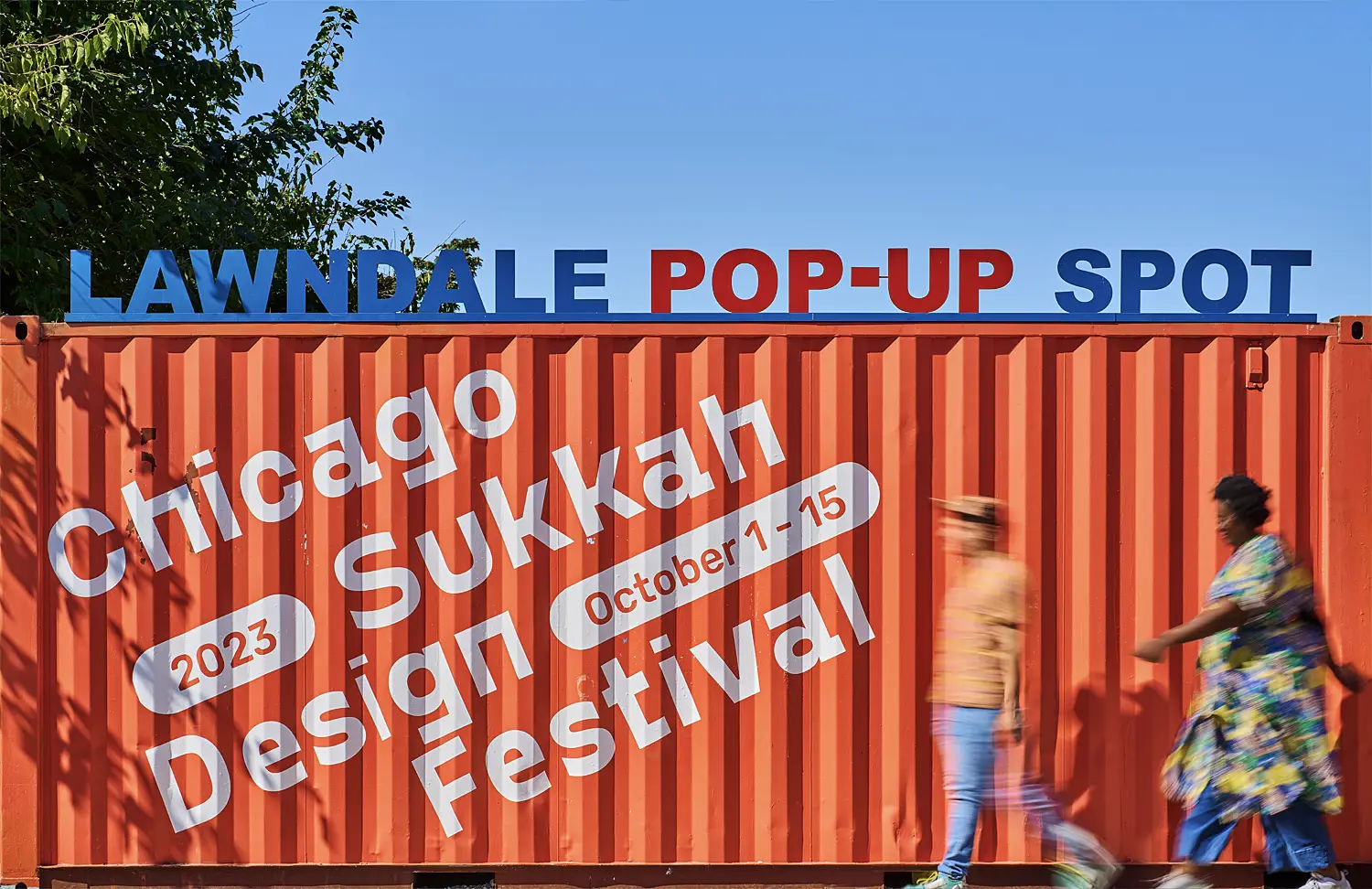
Lawndale Pop-Up Spot (LPUS) is a community museum in a shipping container, co-founded by Chelsea Ridley and Jonathan Kelley. Photo by Brian Griffin for the Chicago Sukkah Design Festival
North Lawndale emerged in the 19th century as a formidable enclave of Czech immigrants, which gave way to a predominantly Russian and Polish Jewish population in the early 20th century. Following the Great Migration, it become a center of Chicago’s larger African American community. Decades of redlining and disinvestment have scarred the area, though the community has persevered and undergone a degree of revitalization in recent years.
That layering of history is wholly evident at the Stone Temple Baptist Church, the owner of the unused lot operated by Lawndale Pop-Up Spot. The congregation inhabits a former Romanian Jewish synagogue, which they purchased in 1954, and has assiduously preserved its eclectic Moorish revival architecture and Jewish iconography. Famously, the Stone Temple Baptist Church served as a forum for the Civil Rights Movement, and hosted the likes of Martin Luther King Jr. and Roy Wilkins, amongst others. The Chicago Sukkah Design Festival celebrates that heritage and seeks to strengthen solidarity between Chicago’s Jewish and Black communities.
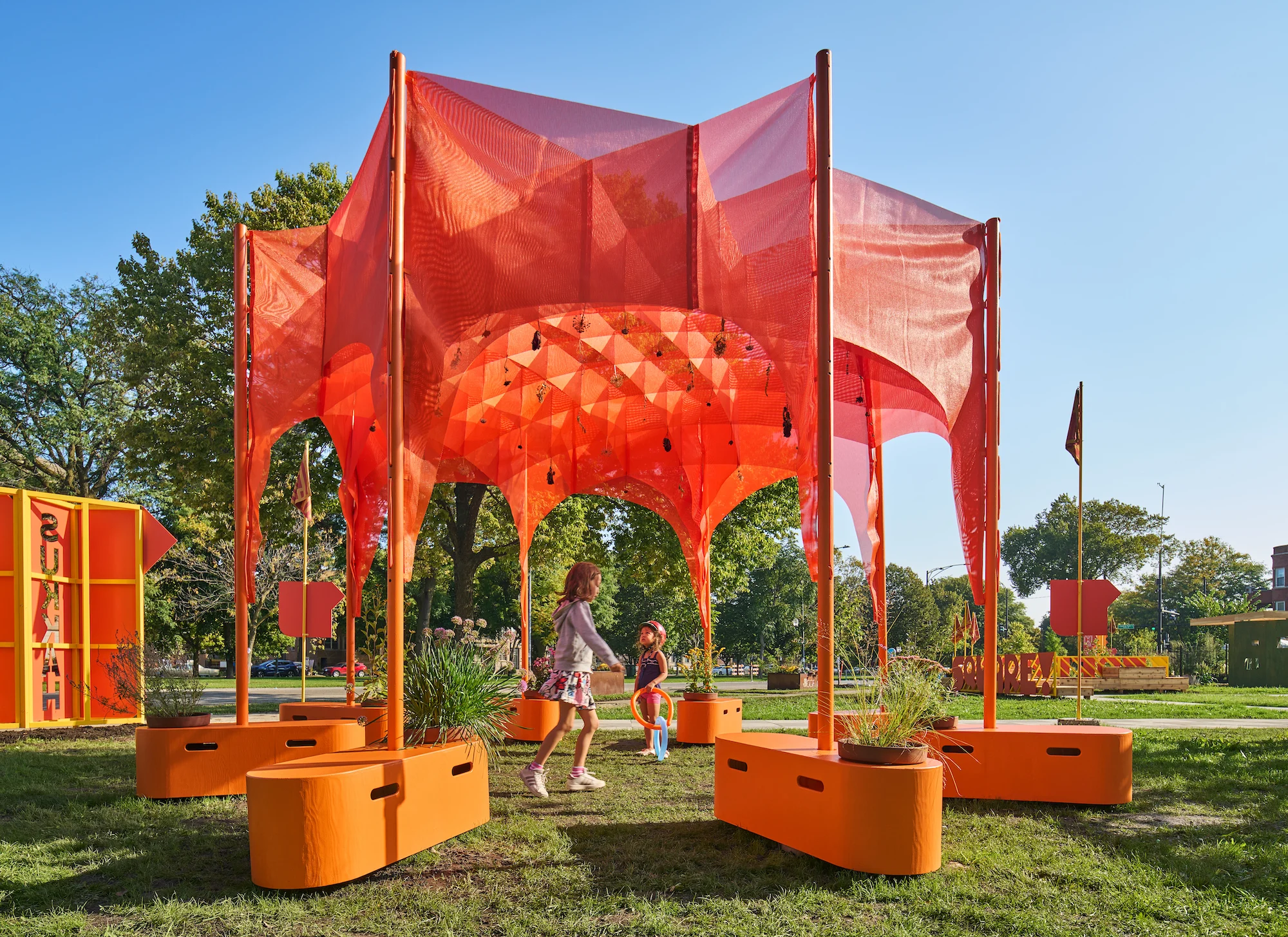
I AM BLOOMING by Akima Brackeen and Office of Things, working with I AM ABLE. Photo by Brian Griffin for the Chicago Sukkah Design Festival
This year’s festival included six sukkahs, and, notably, each is designed to be relocated and permanently reinstalled on the grounds of nearby community organizations, who partnered in designing them. According to Altshuler, who along with Morrison, are also participants of the latest cycle of Exhibit Columbus, the design teams for the 2023 edition were selected through a request for qualifications process. “It was not a design competition, but an opportunity for designers to express why they are interested in our mission and the neighborhood of North Lawndale, and how they approach community driven and participatory design,” says Altshuler. “The community and social service organizations submitted a similar letter of interest, and then we played matchmaker; seeing where architectural interests might pair up with programmatic needs.”
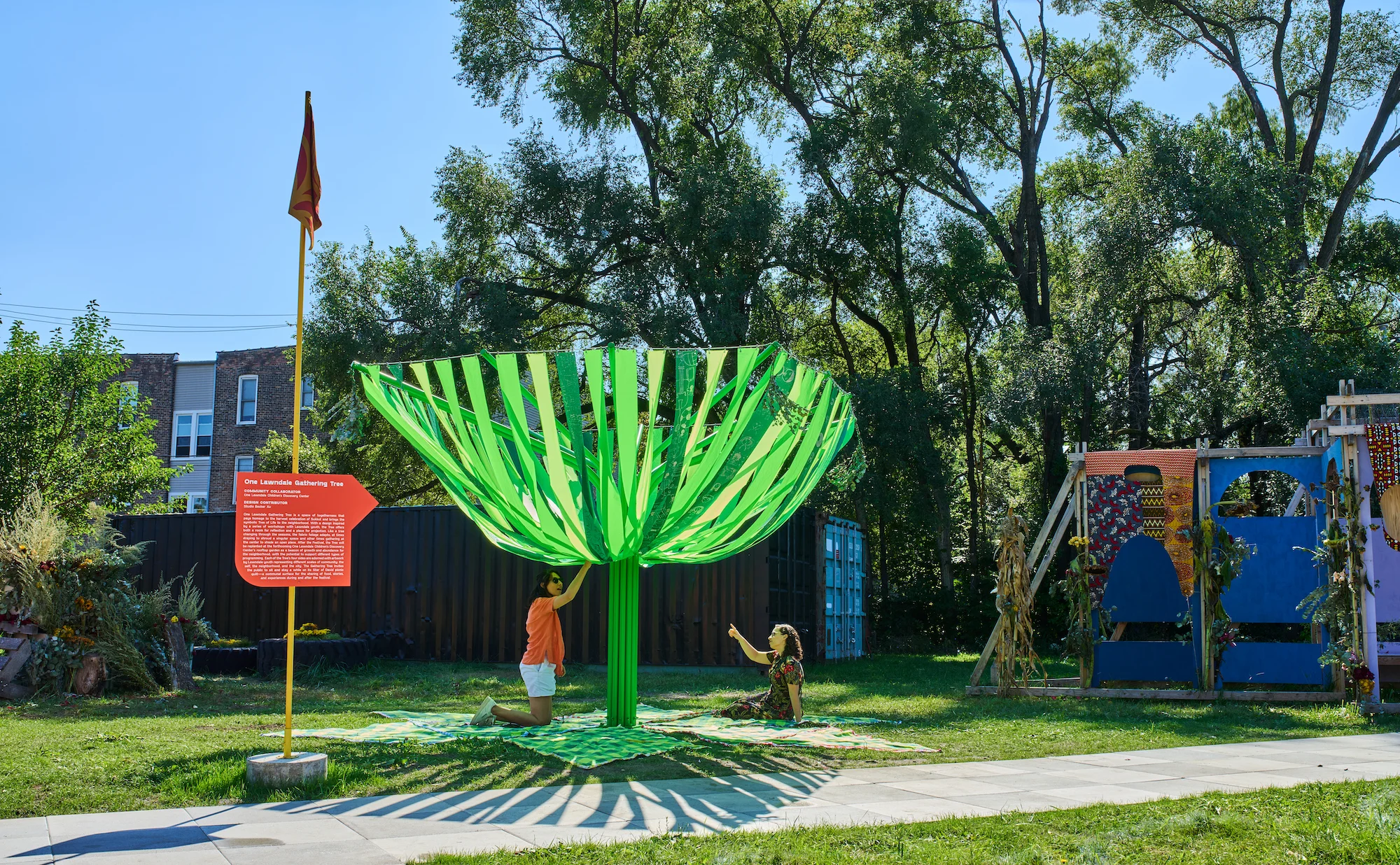
One Lawndale Gathering Tree by Studio Becker Xu, working with One Lawndale Children’s Discovery Center. Photo by Brian Griffin for the Chicago Sukkah Design Festival
The designs and programs vary widely across participants. One Lawndale Gathering Tree, designed by Studio Becker Xu and One Lawndale Children’s Discovery Center, brings the symbolic tree of life to the North Lawndale neighborhood, and each of its four sides features artwork by Lawndale youth. Odile Compagnon Architect + Erik Newman, with the North Lawndale Greening Committee and the Young Men’s Educational Network, designed One To Many / Many To One, an homage to the Slum Busters Garden, the birthplace of the Chicago community garden movement; its many sticks and knots represent the engagement of North Lawndale residents in supporting one another in the absence of government support. I AM BLOOMING, designed by Akima Brackeen and Office of Things, with I AM ABLE, a mental health service, celebrates the shared values and traditions of African, African American, and Jewish cultures with a meditative pavilion.
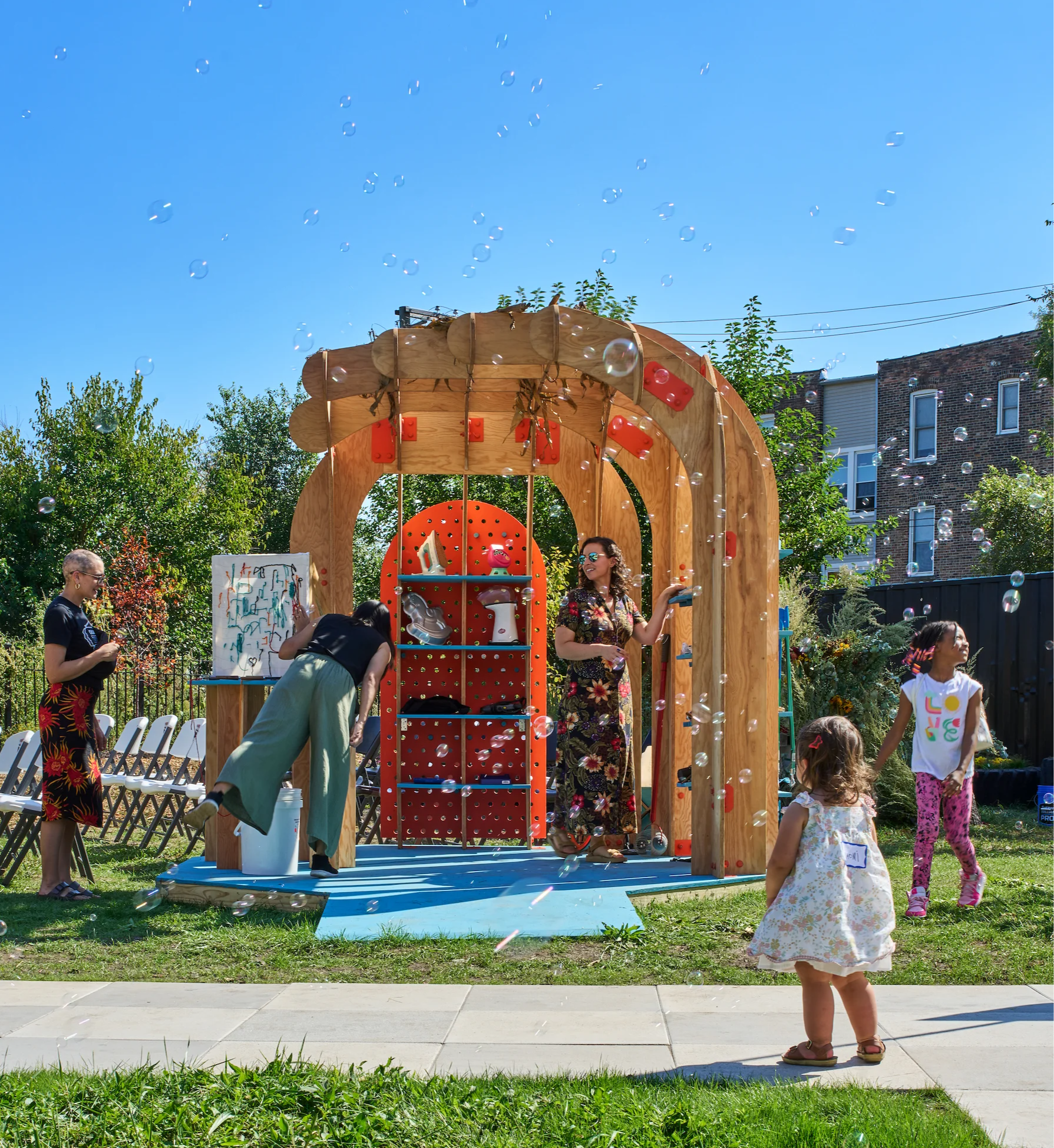
1
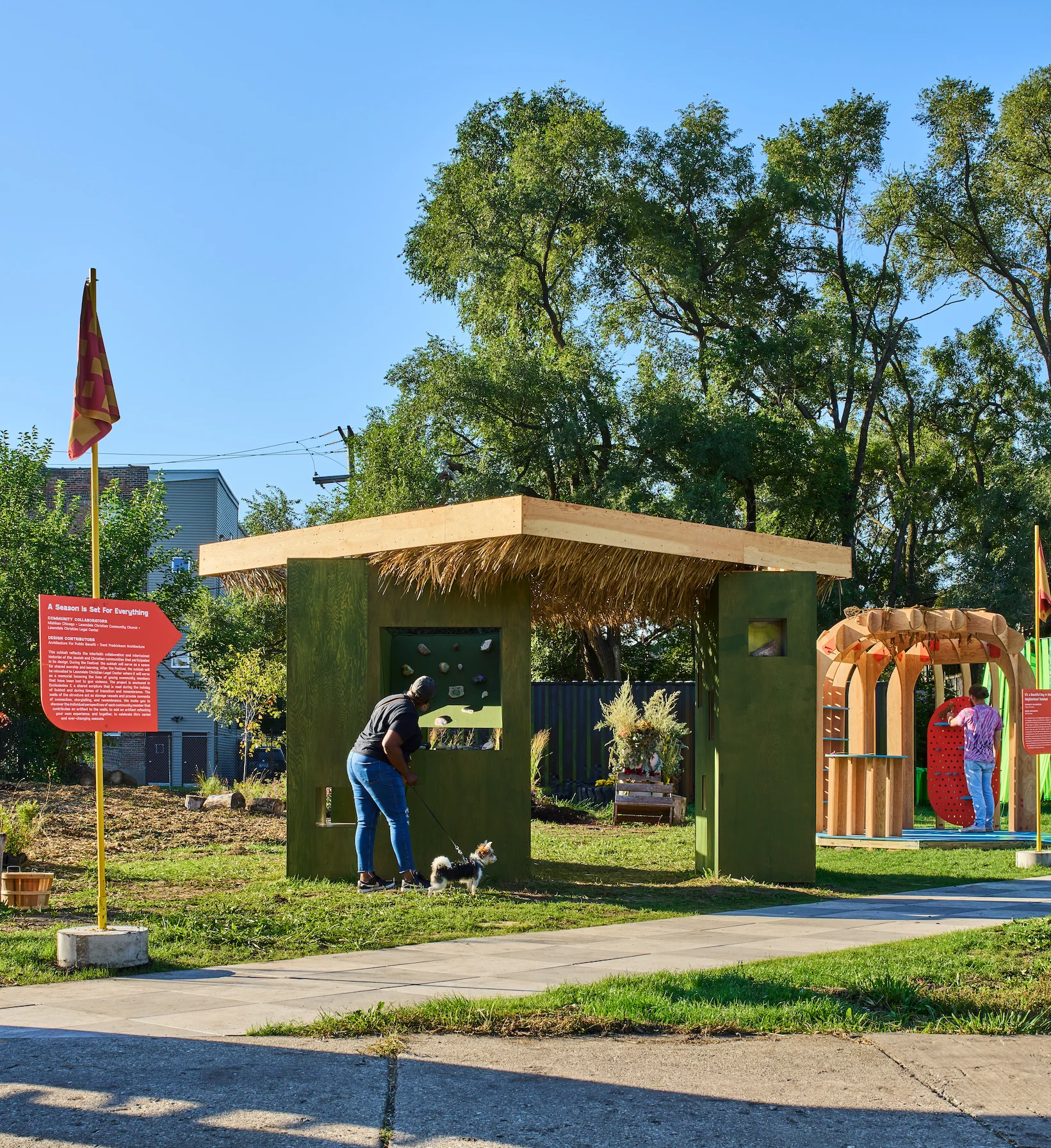
2
It’s a Beautiful Day in the Neighborhood Toolshed by Could Be Design, working with the Chicago Tool Library (1); A Season Is Set For Everything by Architecture for Public Benefit (Chana Haouzi) and Trent Fredrickson Architecture, working with Mishkan Chicago, Lawndale Christian Community Church, and Lawndale Christian Legal Center (2). Photos by Brian Griffin for the Chicago Sukkah Design Festival
Designer Antwane Lee collaborated with the Building Brighter Futures Center for the Arts, a provider of social programs for underprivileged children, to build the Sukkah of Connectedness which, in its undulating and intersecting timber members, symbolizes the cross-cultural connections of community. The A Season is Set for Everything pavilion, designed by Architecture for Public Benefit and Trent Fredrickson Architecture, with Mishkan Chicago and the Lawndale Christian Community Church and Legal Center, is a space of shared worship and learning with memorial plaques honoring young community members lost to gun violence. Could Be Design and the Chicago Tool Library collaborated to create It’s A Beautiful Day In The Neighborhood Toolshed, a pavilion with cocoon-like pattern of marine plywood ribs and reconfigurable shelves.
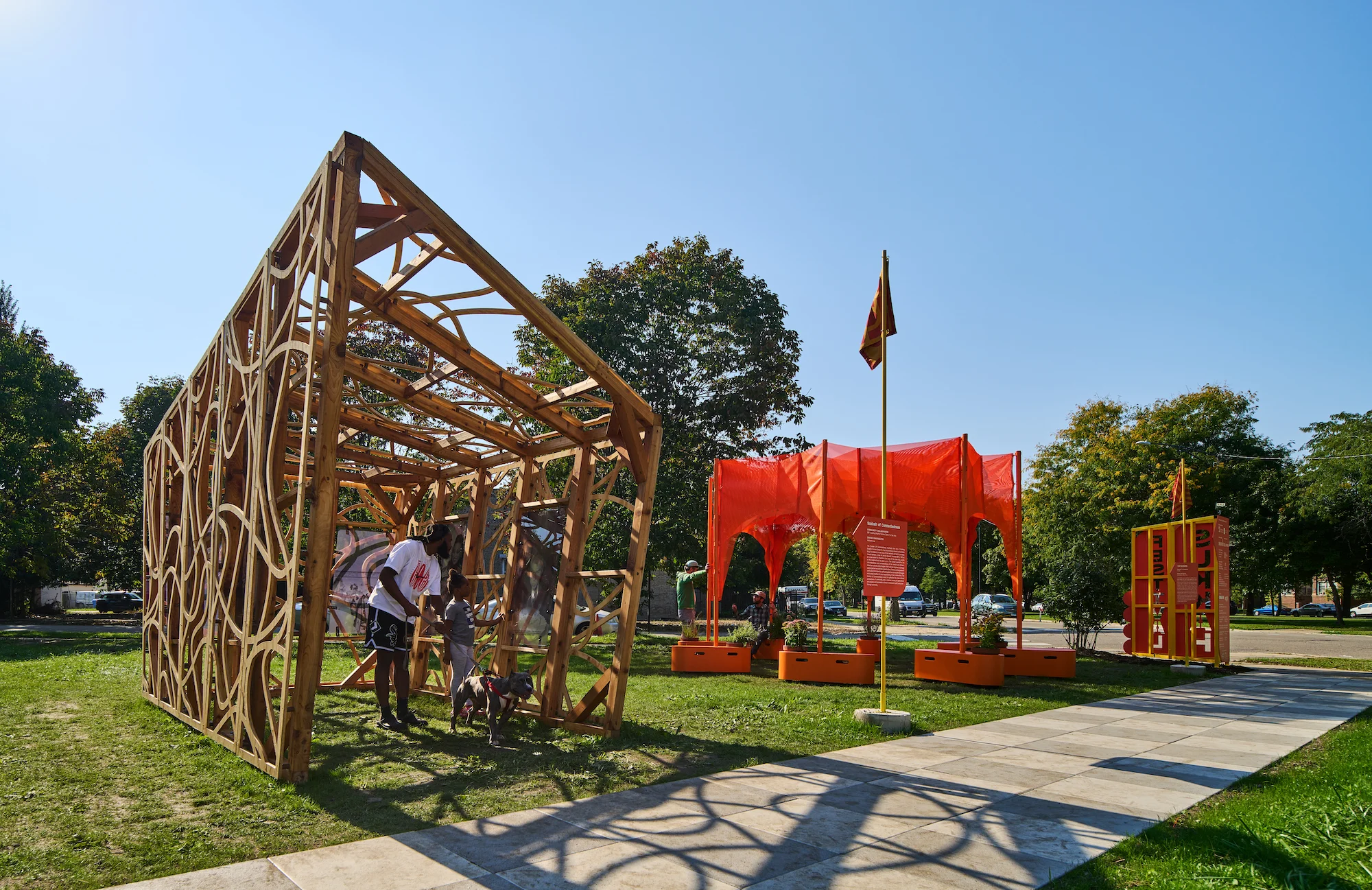
3
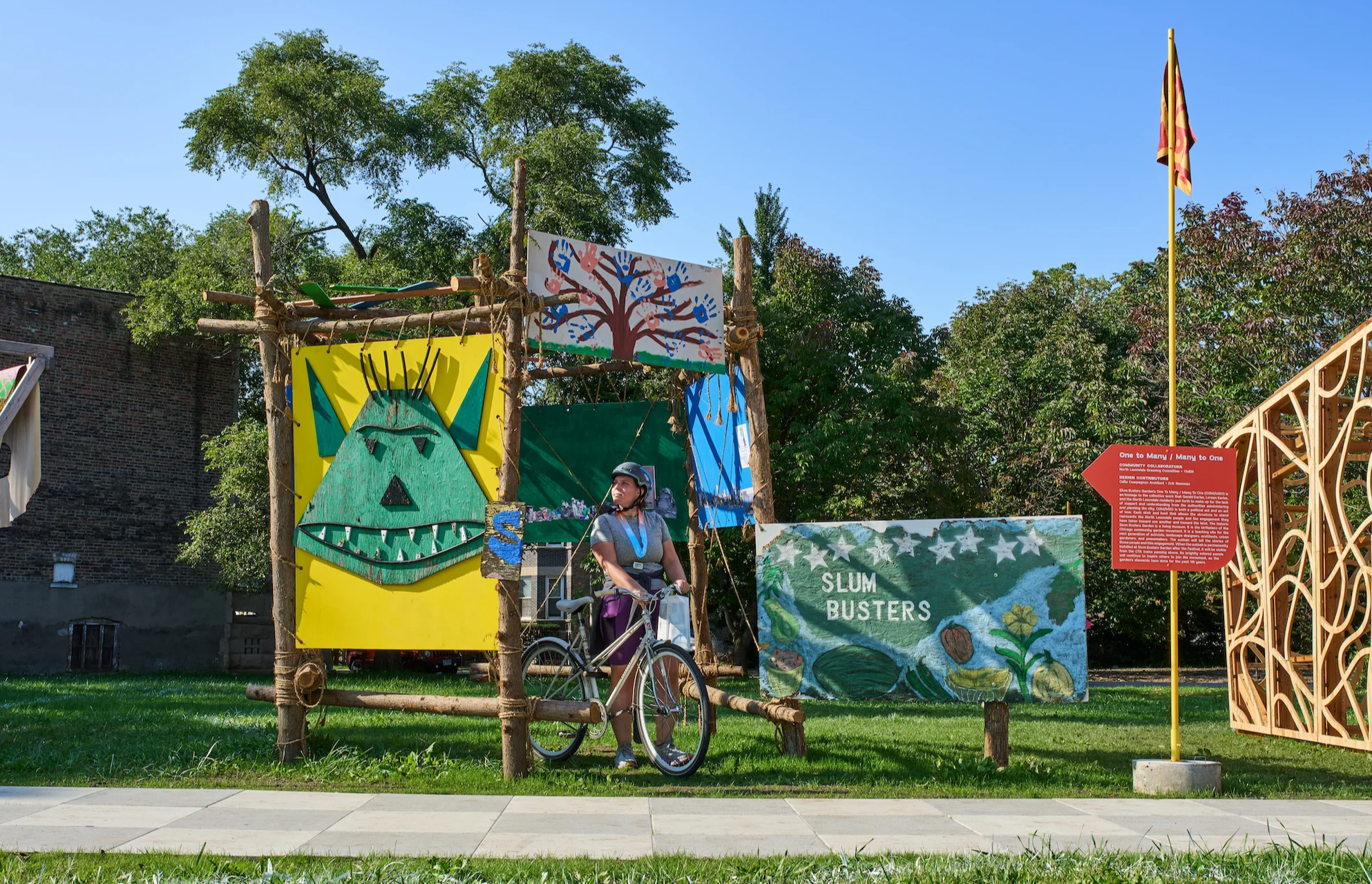
4
Sukkah of Connectedness by Antwane Lee, working with Building Brighter Futures Centers for the Arts (3); One To Many / Many to One by Odile Compagnon and Erik Newman, working with North Lawndale Greening Committee and YMEN for Slum Buster’s Garden (4). Photos by Brian Griffin for the Chicago Sukkah Design Festival
It is Altshuler’s hope that the annual festival, which this year is a participating event of the fifth Chicago Architecture Biennial, will serve as a new paradigm for similar design festivals to develop long-term relationships with community groups and their social infrastructures.
The installations will remain in place through October 15th at North Lawndale’s James Stone Freedom Square before being relocated to permanent new sites in the neighborhood.



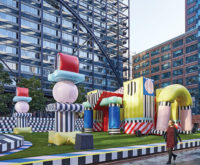
Post a comment to this article
Report Abusive Comment